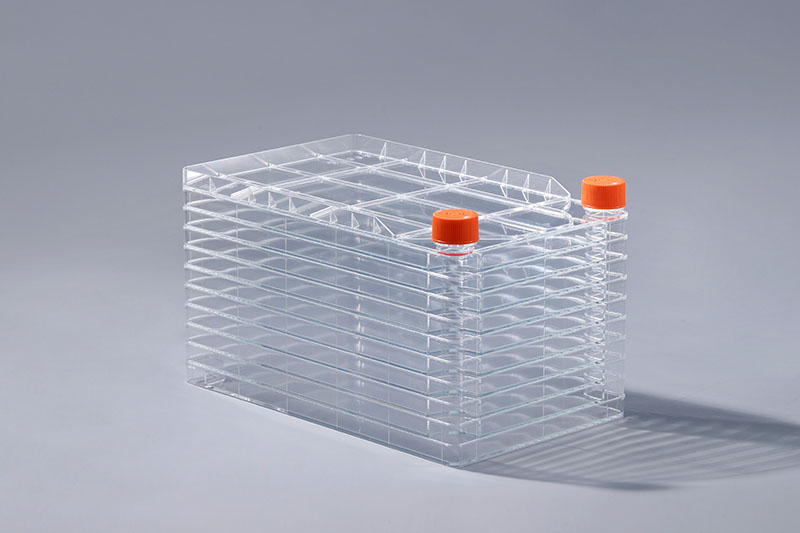Cell culture is inseparable from various cell consumables. As a production device suitable for large-scale cell culture, cell factories have been increasingly applied to the production and preparation of vaccines and other biological products.
The cell factory is composed of one or more layers. According to the cell culture scale, the cell factory corresponding to the culture area can be selected. In addition, the cell factory also has the following characteristics:
1. After the cell factory enters the liquid and the bottle mouth adopts a wide-mouth design, the filling and harvesting of the liquid are relatively rapid, and it is not easy to produce bubbles. At the same time, the large-mouth design is more conducive to gas exchange and is suitable for high-density cell culture.
2. The standard cell factory is equipped with a 0.2μm sterile breathable cover and a sealing cover, which can be used in different culture environments. The sterile breathable cover is used in a CO2 environment, and the sealed cover can be used for ordinary incubators and greenhouses that do not contain carbon dioxide. In addition, a liquid transfer cap is optional to facilitate the aseptic transfer of liquid, and a bottle cap suitable for liquid transfer can also be customized according to customer process requirements.
3. The breathable membrane of the bottle cap will be designed to be hydrophobic, which will not affect the air-tightness and venting effect of the breathable membrane after being in contact with liquid.
4. The imported glue bonding process is adopted between the various layers of the cell factory, which can withstand the pressure of 1.5 PSI to ensure that the product does not leak during the entire cultivation process.
The cell factory is suitable for a variety of adherent cell cultures, including Vero cells, HEK 293 cells, CAR-T cells, MRC5, CEF cells, porcine alveolar macrophages, myeloma cells, DF-1 cells, ST cells, PK15 cells, Adherent cells such as Marc145 cells. It is also suitable for static culture of suspension cells such as CHO cells, insect cells, BHK21 cells and MDCK cells.
The FAI climbed 5.9 percent year-on-year in the first 11 months of 2018, quickening from the 5.7-percent growth in Jan-Oct, the National Bureau of Statistics (NBS) said Friday in an online statement.
The key indicator of investment, dubbed a major growth driver, hit the bottom in August and has since started to rebound steadily.
In the face of emerging economic challenges home and abroad, China has stepped up efforts to stabilize investment, in particular rolling out measures to motivate private investors and channel funds into infrastructure.
Friday's data showed private investment, accounting for more than 60 percent of the total FAI, expanded by a brisk 8.7 percent.
NBS spokesperson Mao Shengyong said funds into weak economic links registered rapid increases as investment in environmental protection and agriculture jumped 42 percent and 12.5 percent respectively, much faster than the average.
In breakdown, investment in high-tech and equipment manufacturing remained vigorous with 16.1-percent and 11.6-percent increases respectively in the first 11 months. Infrastructure investment gained 3.7 percent, staying flat. Investment in property development rose 9.7 percent, also unchanged.
 English
English



















































